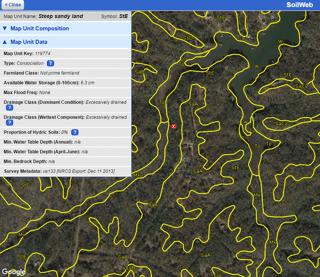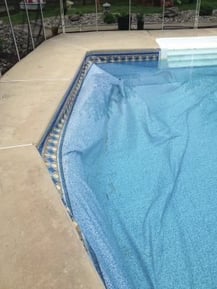Removal and Cost of Hitting Rock or Water During Inground Pool Construction
May 4th, 2016
5 min read
By Jason Hughes
.jpg?width=1400&height=1049&name=FullSizeRender%20-%20Copy%20(2).jpg)
River Pools specializes in inground fiberglass pools. We are familiar with a wide variety of soil conditions, ranging from coastal areas that are literally below sea level, to mountainous regions engorged with bedrock.
We also have learned through our collective past experiences how to deal with both high water tables (ground water) and the removal of rock for the installation of fiberglass pools.
If you are considering an inground pool, you likely have a myriad of questions regarding how water and rock can influence the construction of your project, and whether the soil condition should impact which type of pool you purchase.
Today, we're going to tackle these questions and hopefully give you the information you need to feel comfortable moving one step closer to owning your own backyard pool. So let's jump right in!
Question 1: Is It Possible to Tell If I Will Hit Rock or Water before the Installation of My Inground Pool?
There is an amazing online resource that allows you to check any location in the United States for the approximate depth of bedrock.
Here's how:

- Visit SoilWeb: An Online Soil Survey Browser, a website provided by the California Soil Resource Lab.
- Once there, click "Menu" in the upper left corner.
- Then click "Zoom to Location" and enter your address.
- Find your home on the image and click to drop a pin there.
- Click "Map Unit Data" in the upper left and it will give either the depth of bedrock in cms, or "n/a" if it's not near the surface.
Keep in mind that this is only an approximation, but it will give you an idea. This resource also provides a depth for "water table" but this is the depth of the first layer of moist soil, not necessarily the depth at which you will hit ground water. Thanks to the UC Davis California Soil Research Lab for providing this great resource.
To check for groundwater, the best bet is often to dig test holes with a post hole digger or piece of equipment, if available, to reveal the water table depth. Keep in mind that the depth of groundwater can vary greatly depending on tide, rainfall, season, etc.
Question 2: Should Fiberglass, Concrete, or Vinyl Liner Pools Be Avoided In Areas With Rock or Groundwater?
The short answer is No. Any of these pool types will work well in any condition so long as they are constructed correctly.
One myth that we encounter on a regular basis is that fiberglass pools should not be installed in areas with high water tables because they are likely to float. If this were true, we would have heard about this after so many pools have been installed in high water table areas, but we have not.
However, if this is a concern for you, you should learn more about what we consider to be installation best practices, which includes literally tying the pool into the ground and providing a way to alleviate hydrostatic pressure.
 Regarding vinyl liner pools and high water tables, the only concern is the liner "floating up", which happens whenever there is enough groundwater to cause the liner to lift from the floor of the pool.
Regarding vinyl liner pools and high water tables, the only concern is the liner "floating up", which happens whenever there is enough groundwater to cause the liner to lift from the floor of the pool.
When the water recedes, the liner returns to the pool floor, but because it does not re-seat in exactly the same place, it leaves nasty wrinkles behind. This does not have any structural consequence, but it is unsightly and unpleasant.
Regarding the performance of fiberglass pools in areas with large amounts of rock, we have found that they do extremely well.
Question 3: How Is Rock Removed for My Pool Installation?
Keep in mind that many types of rock can be removed with normal excavating equipment.
However, when bedrock is encountered, an installer may rent a "hoe ram," which is an excavator with a huge jackhammer attachment.
This busts up the rock which can then be removed with an excavator. In most cases, the rock needs to be hauled away because it cannot be used on site.
Question 4: How Much Does Rock Removal Cost?
Every situation is different, but based on our experience and conversations, rock can usually be removed within a day or two.
When you factor in the cost to rent the equipment and haul away and dispose of the rock, it may cost somewhere between $3,500 and $5,500.
However, if an installer does not hit rock that often, they may give the customer the benefit of only paying their direct cost. If they had to do this on a regular basis, an installer could charge more.
Question 5: How Is Ground Water Removed for the Installation of My Pool?
The type of pool directly impacts how groundwater is mitigated during construction.
One distinct advantage of installing a fiberglass pool shell is that it happens so quickly. Usually within a day or two of breaking ground, the pool is installed and full of water. This being the case, the water only needs to be kept "at bay" for several hours.
Once the pool is full, the groundwater is no longer a concern (although an installer may continue to remove it with a submersible pump until the patio is poured).
The ground water is removed during installation by first starting the excavation at the deep end of the pool when possible.
This allows the water to continuously flow to the deepest point where it can be pumped out.
At the deepest point an installer may dig a hole approximately 12" deeper than the bottom of the pool, place clean stone in the hole, and place a submersible pump there to remove the water. Sometimes more than one pump is needed.
During excavation, the pumps will likely clog with sediment so it's wise to cover them with filter fabric. We've seen this method work extremely well and require minimal effort.
In contrast, concrete (also called gunite) pools take much longer to install, typically three to six months or even more. This makes the process of ground water removal a long term burden on such projects.
The same method described above can be employed, or because of the greater chance of cave-ins resulting from having the hole open for such a long period of time, well-points can be installed as a semi-permanent way of controlling ground water around the entire perimeter of the pool.
Well points are basically pipes driven or washed into the ground that have a series of screens that water can be sucked through.
They are connected to a pump that draws the water out of the ground and discharges it away from the pool area.
Question 6: How Much Does Ground Water Removal Cost?
In our experience, we have seen homeowners charged for ground water related issues where an extremely high water table caused the sides of the excavation to cave in and thus required the use of significantly more stone backfill material than originally estimated.
An installer may include one additional load of stone in their contract for cases like this, but in extreme cases they may have to ask the homeowner to at least cover this cost.
In areas with purely sandy soil and high water tables, well points could be used to prevent this. However, in these cases, the soils would not permeate well enough to use them.
Well, we hope this has answered your questions. If you have additional rock or water related pool construction questions, or comments, please leave them below.
We offer a full line of fiberglass pool designs. Want to know how much your fiberglass pool would cost? Try out our pool pricing calculator tool today, or contact us for a custom quote using the button below and we will connect you with an independent installer.
Still shopping around for an inground pool and don't know which is right for you? Download our free ebook below for a full break down of the differences between the three main inground pool types.
Up Next:
Freeform Pools 101: Designs, Cost, and Construction Questions Answered
Small Pools 101: Shapes, Dimensions, Features And Other Considerations
Editor's note: This blog article was updated on January 7, 2019.
Editor's note: This article was updated on December 13, 2023.
vinyl liner pool photo credit: www.poolspanews.com
Jason Hughes is a partner at River Pools Virginia, a fiberglass pool installation company based in Warsaw, Virginia. With over 20 years of hands-on experience, Jason has dedicated his career to helping families create beautiful, functional backyards while ensuring every fiberglass pool installation meets the highest standards of quality and safety. In addition to his work with homeowners, Jason serves as a GENESIS instructor with the Pool & Hot Tub Alliance (PHTA), where he teaches fiberglass pool installation best practices to pool professionals across the country. Whether he’s on a job site or leading a training session, Jason is passionate about raising the bar for fiberglass pool installations and helping families make confident, informed decisions as they transform their outdoor spaces.
Topics:


